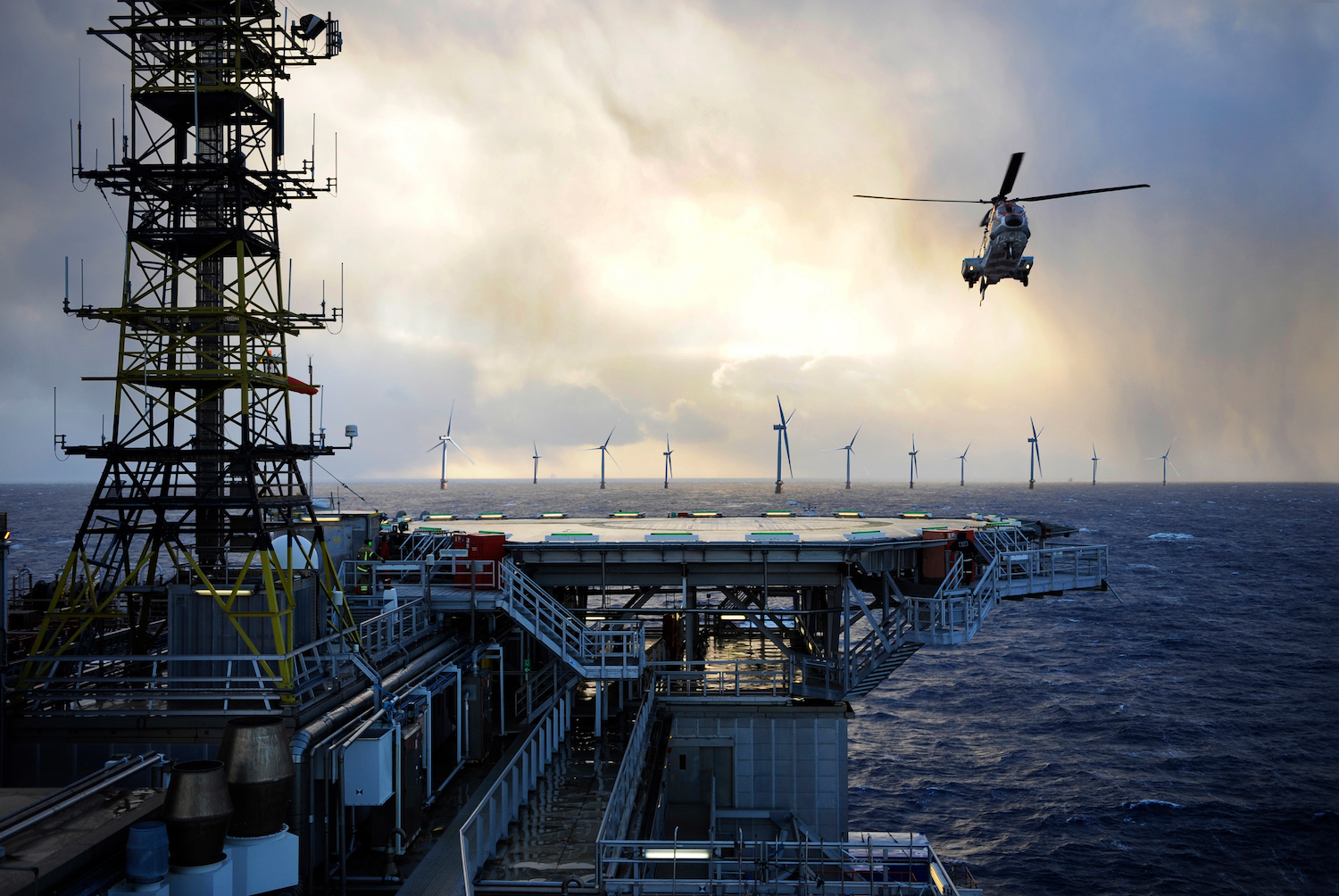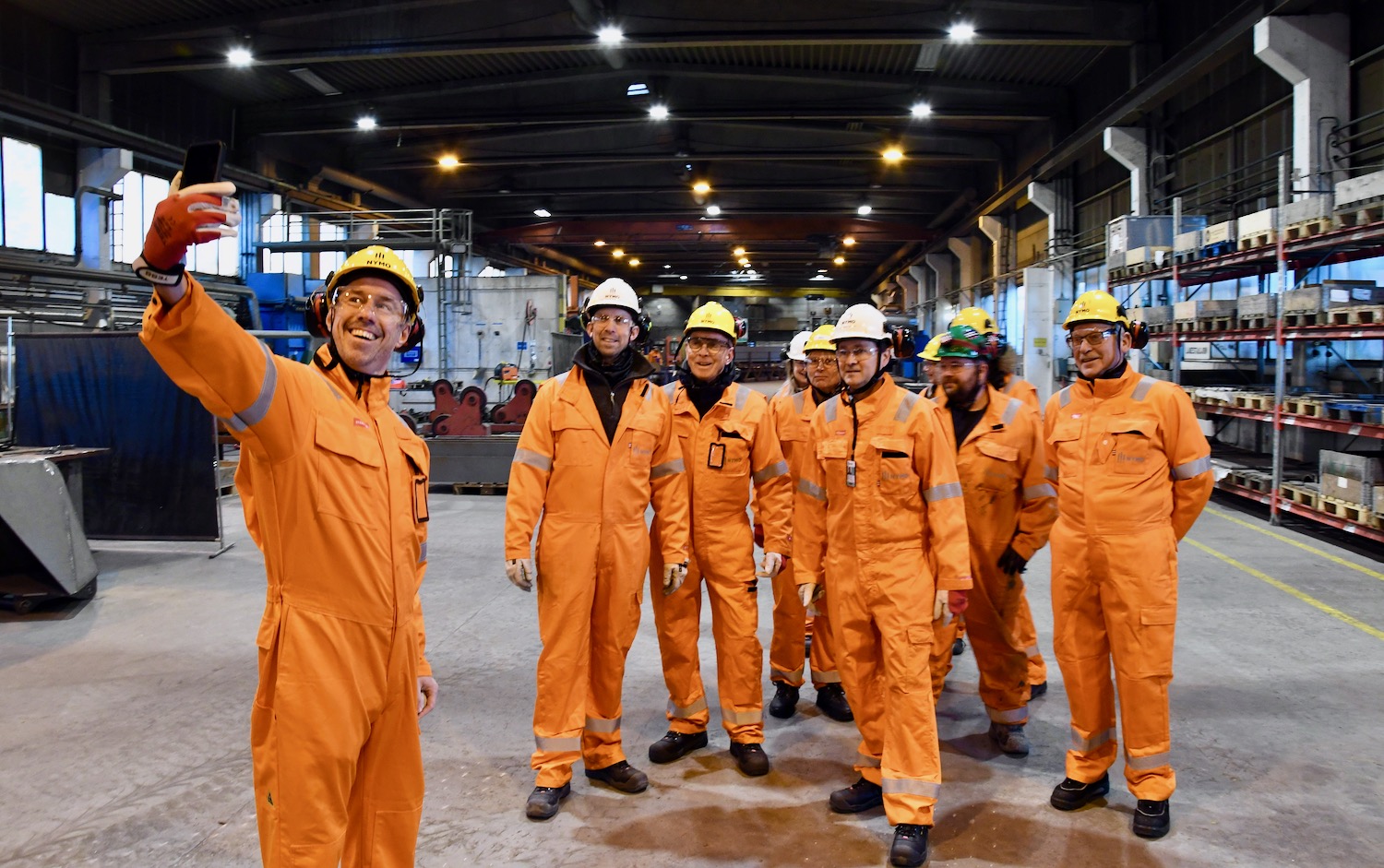“We regard offshore wind as an appealing business area, and we are determined to bid on new projects,” says Høye Høyesen, CEO of MacGregor Norway.
MacGregor provided mooring solutions for Hywind Scotland, a pilot floating wind farm operated by Equinor.
“As soon as floating wind is cost-efficient, and we are fast approaching that point, it will represent a huge market opportunity. Onshore wind is controversial and draws a lot of negativity, but I expect offshore wind will have more support in the general public,” says Høyesen.
Origo Solutions delivered control systems to Hywind Scotland.
“For a long time, our focus has been to gain access to other markets than oil and gas. We have for several years delivered process control systems to the industry, as Elkem, Alcoa and Eramet. The last few years, we have had the opportunity to enter the market for offshore wind, where we delivered the SCADA system to Hywind Scotland” explains Bjørn-Tore Lenes, CEO of Origo Solutions.
Origo took also part in a study of Hywind Tampen, Equinor’s new floating wind farm on the Norwegian Continental Shelf, and is determined to compete for a contract.
“We are keen on developing a greater understanding for this market. We are in a dialog with various contractors for fixed and floating offshore wind, to position ourselves as a future supplier of control systems in this sector,” says Lenes.
SIGNIFICANT DELIVERIES
National Oilwell Varco has already had significant deliveries and ongoing deliveries to offshore wind projects and has further plans and initiatives to grow its business in this space.
At present the development cost for floating wind concepts are too high for large scale deployment. NOV is engaged in multiple initiatives to come up with more cost-efficient floating wind concepts both with regard to initial build and installation and future maintenance. Last year, NOV acquired the leading vessel designer of offshore wind installation vessels, Gusto MSC.
NOV delivered cranes that installed the wind turbines for the Hywind Scotland project. NOV has also sold and delivered a number of vessel designs, jacking systems and cranes used to install fixed offshore wind turbines. And NOV has connected wind turbines to a joint power transformer and also delivered equipment used to lay the power cables that transports renewable offshore power to shore.
“There is currently one fundamental challenge for the floating offshore wind prospects – the total cost per installed effect. In order to cut cost, we need to re-design and come up with new concepts tailored to the needs of wind industry,” says Frode Jensen, Managing Director at NOV Norway.
NOV heads a consortium consisting of Equinor, Ulstein, Fred Olsen, SINTEF and NOV, established by Equinor, with a clear goal of reducing costs for floating wind farms.
“We are also developing new sub structures for floating wind turbines, and mooring solutions based on our expertise from APL,” says Jensen.
He says it is important for NOV to diversify its products and market portfolio.
“We are looking at industries in which our technology and key competence are easily transferrable. It makes good sense to put our strengths to use also in new markets. It is hard to say how important renewables will be, compared to oil and gas, but our goal is to be a significant player in both markets,” says Jensen.
“MISTAKE NOT TO ENTER THIS MARKET”
CEO Lenes at Origo Solutions is clear when it comes to renewables:
“It would be a mistake not to enter this market. We will follow offshore wind very closely, even though a majority of our products and services will be oil and gas related for a long time to come. We expect renewables to represent 20 percent of revenue the next few years,” says Lenes.
MacGregor has spent the downturn in the oil and gas industry well to position the company for the future.
“We have made product development a key activity, both in order to reduce cost on existing products and to develop new products. We have pursued public funding opportunities that have enabled us to keep key personnel busy in a difficult market,” says Høye Høyesen, CEO of MacGregor Norway.
At times, as much as 25 per cent of MacGregor’s employees have been involved in R&D projects. Results include new technology for installation of offshore wind turbines, autonomous mooring of ships and the world’s first heave-compensated fiber rope crane.
Renewables account for approximately 15 to 20 per cent of MacGregor Norway’s revenue.
“I would like to see a 50-50 split between renewables and oil and gas. That would make us less vulnerable in a cyclic market,” says Høyesen.
QUALIFYING TECHNOLOGY
CSUB, a world leader for subsea composite solutions in the O&G industry, is also keen on entering the offshore wind market.
“There is a huge market for the right technology floating wind turbines. We need another two to three years to qualify our technology”, says Jon Inge Brattekås, SVP Market and Technology at CSUB.
“Agder is the right region for the development of this technology. Our joint competence on materials, mooring and ocean technology is easily transferred to offshore wind,” says Brattekås.
READ MORE:
https://gcenodeno.tempurl.host/opinions/transfer-of-technology-and-competence/
https://gcenodeno.tempurl.host/news/committed-to-geothermal-energy/
https://gcenodeno.tempurl.host/news/aquaculture-has-great-potential/
https://gcenodeno.tempurl.host/news/part-of-a-seabed-mining-pilot/



